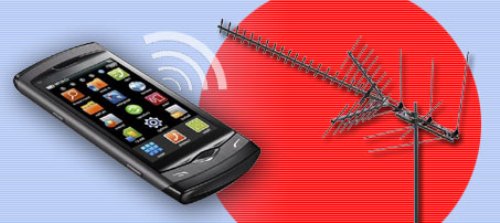
Mobile phones are very convenient to make calls and receive calls. The same mobile phone may cause inconvenience as well, as it poses the risk through eavesdropping antennas.
The key disadvantage with the processors employed in Smartphones is that they fail to uphold the integrity of encrypted data when the same is conveyed through radio signals.
An interesting revelation was made when the data transmission signal through iPad was intercepted through an ordinary television antenna.
It has been demonstrated that the antenna was able to pick the signal and when the same signal is processed through specialized software after amplifying many times has revealed the secret key i.e., the encryption key.
Most smartphones are vulnerable to eavesdropping
This revelation gives the picture of the current state of affairs of Smartphone communication. When the encryption key is obtained through eavesdropping antennas it will be easy to intrude into others’ networks.
It is easy to impersonate and access resources of a company’s server. Transistors which are impregnated into chips will process the encrypted information. There is every possibility of leakage of information through these transistors.
Hence, these should be concealed in such a way that signal will not leak. Although it is possible to intercept signals through eavesdropping antennas, the same technique cannot be applied for all brands and all models of smartphones.
It is easy to catch signals from a Smartphone at a considerable distance without being noticed by users through eavesdropping antennas. However sophisticated might be your Smartphone, it is not completely isolated from deceptive interceptions through eavesdropping.
Signal from some smartphones can be detected from short distances and signal from some smartphones can also be intercepted from long distances.
Overcoming the eavesdropping menace
The vulnerability of mobile communication through eavesdropping gives an opportunity to strengthen systems to carry out financial transactions through smartphones.
Google and many leading phone manufacturers are ambitious to launch NFC chips for contactless mobile payments.
Great care should be taken to protect the interests of Smartphone users from eavesdropping menace. It has been established by researchers that it is possible to intercept signal processed through any kind of mobile application and mobile software.
While mobile phone offers flexibility and many comforts, the potential dangers through the usage of the same devices should be properly addressed especially from eavesdropping antennas.
Concerted efforts should be made by mobile phone manufactures, internet service providers and researchers to give safety and security to mobile users.
Cryptographic Research has made progress in finding the loopholes in various mobile phones including some of the reputed brands present in the market to withstand efforts made through eavesdropping antennas.
The same has been conveyed to the respective companies to forewarn the potential dangers through these data leakage conditions.
Subtle variation in encryption to tackle eavesdropping
There is life saving techniques to address this eavesdropping concern. Instead of going for hardware and software updates, changes in the way tasks are processed will yield definitive results.
For example, a single task can be divided into multiple tasks and each task can be processed with cryptographic keys. However, the disadvantage is that it demands more processing power with the increase in number of tasks.
Higher processing will lead to higher power consumption as well. When processing increases the response rate of many applications will hit drastically.
The solutions to prevent eavesdropping should not reduce the overall performance of the phone. Mobile phone manufacturers have got a new opportunity to produce not only radiation free but also interception free Smartphones!
Image Credit: http://www.impactlab.net